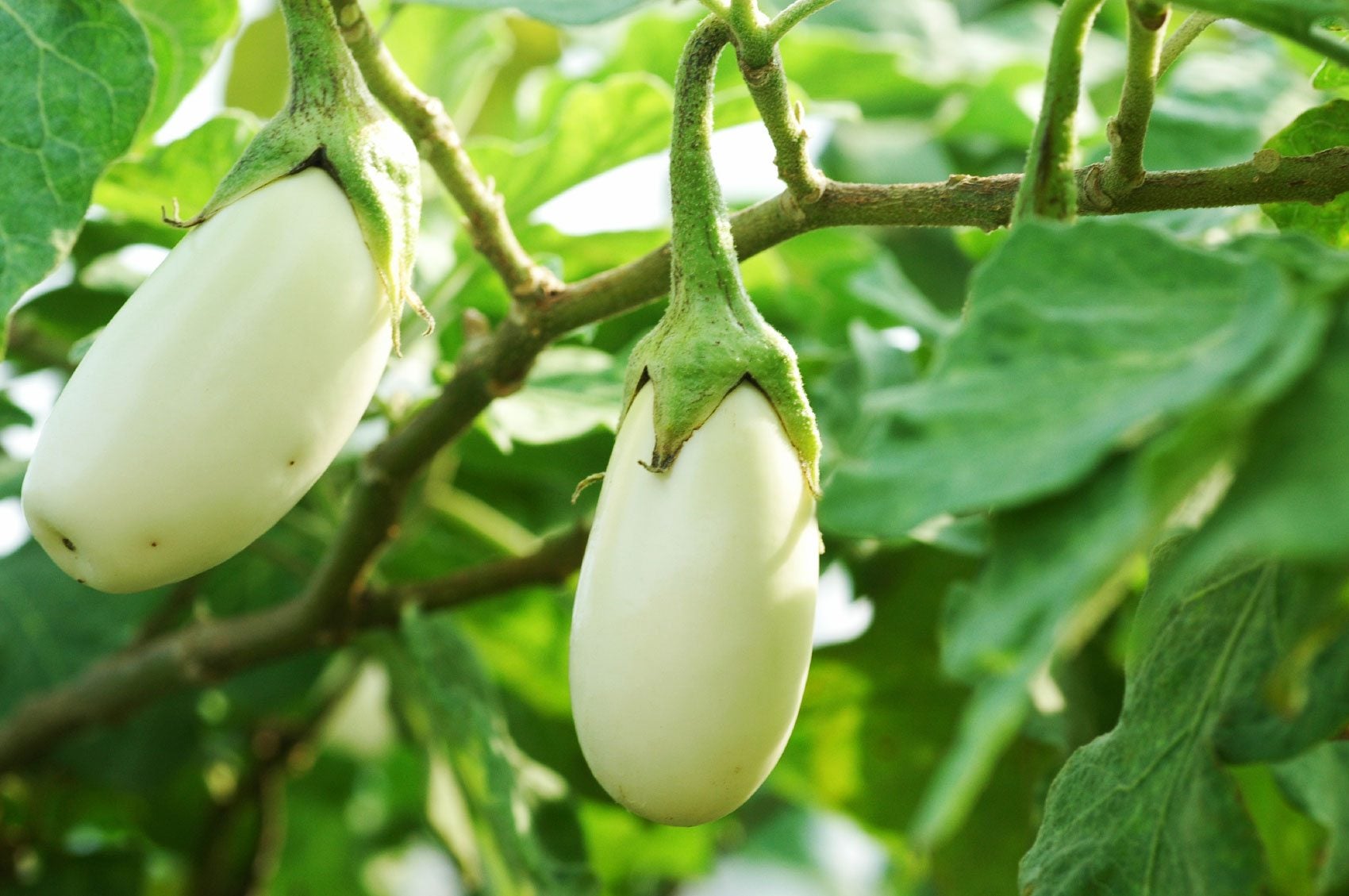Common Eggplant Varieties: Learn About The Types Of Eggplant

A member of the Solanaceae, or nightshade family, which includes tomatoes, peppers, and potatoes, eggplant is thought to be a native of India where it grows wild as a perennial. Many of us are familiar with the most common eggplant variety, Solanum melongena, but there is a plethora of eggplant types available.
Types of Eggplant
For more than 1,500 years, eggplant has been cultivated in India and China. Once trade routes were established, eggplant was imported to Europe by the Arabs and transported to Africa by the Persians. The Spaniards introduced it to the New World and by the 1800's both white and purple varieties of eggplant could be found in American gardens. Eggplant is grown as an annual and requires warm temperatures. Plant eggplant after all danger of frost has passed in an area of full sun, in well-draining soil, with consistent moisture. Fruit can be harvested once it is one-third its full size and thereafter until the skin begins to dull, at which point it is over-mature and will be spongy in texture. As mentioned, most of us are familiar with S. melongena. This fruit is pear shaped, purple to dark purple, and 6 to 9 inches (15-23 cm.) long with a green calyx. This purple-black hue is the result of a water-soluble flavonoid pigment, anthocyanin, which accounts for the red, purple, and blue coloration in flowers, fruits, and veggies. Other common eggplant varieties in this group include:
- Black Magic
- Black Beauty
- Black Bell
There are a number of eggplant types with skin colors from blackish purple to vibrant purplish green, gold, white, and even bicolor or striped skin. Sizes and shapes vary depending upon the type of eggplant, and there are even those that are “ornamental,” which are actually edible but grown more for show. Eggplants are also known as ‘Aubergine' outside of the United States.
Additional Varieties of Eggplant
Additional types of eggplant include:
- Sicilian, which is smaller than S. melongena with a wider base and skin streaked with purple and white. It is also called 'Zebra' or 'Graffiti' eggplant.
- Italian types of eggplant have a green calyx with skin a deep mauve-purple with some light stippling on the skin. It's a smaller, more oval variety than the regular/classic varieties.
- White varieties of eggplant include 'Albino' and 'White Beauty' and, as suggested, have smooth, white skin. They may be round or slightly thinner and longer akin to their Italian eggplant cousins.
- Indian eggplant types are small, usually a few inches (8 cm.) long, and round to oval with dark purple skin and a green calyx.
- Japanese eggplant fruit is small and long, with smooth, light purple skin and dark, purple calyx. ‘Ichiban' is one such cultivar with skin so tender, it need not be peeled.
- Chinese varieties are rounder with purple skin and calyx.
Some of the more uncommon and interesting varieties include the fruit of S. integrifolium and S. gilo, which lacks a solid inside and looks much like its tomato relatives. Sometimes referred to as “the tomato-fruited eggplant,” the plant itself can grow to 4 feet (1 m.) in height and bears small fruit that is only about 2 inches (5 cm.) across or less. Skin color varies from greens, reds, and oranges to bicolor and striped. Another small variety, ‘Easter Egg,' is a smaller 12 inch (31 cm.) plant, again with small, egg-sized white fruit. ‘Ghostbuster' is another white skinned type of eggplant with a sweeter flavor than the purple types. ‘Mini Bambino' is a miniature which produces tiny one inch (2.5 cm.) wide fruit. There are an unending variety of eggplants and while all of them are heat lovers, some are more tolerant than others of temperature fluctuations, so do some research and find what varieties are most suited to your area.
Sign up for the Gardening Know How newsletter today and receive a free copy of our e-book "How to Grow Delicious Tomatoes".

Amy Grant has been gardening for 30 years and writing for 15. A professional chef and caterer, Amy's area of expertise is culinary gardening.
